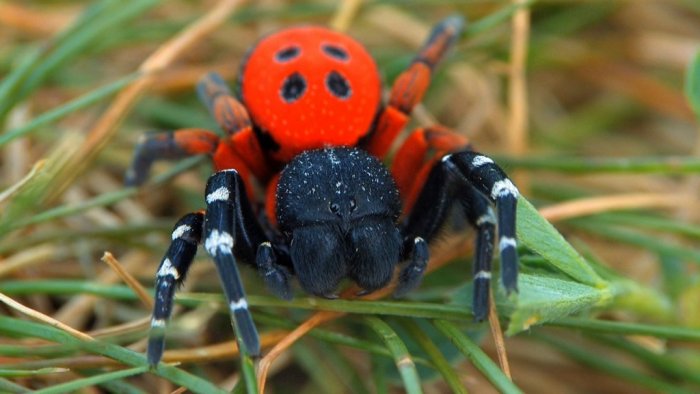MessageToEagle.com – For many years, the beautiful Ladybird spider was thought to be extinct, but it was rediscovered in 1980 in UK.
It is still endangered, but conservationists have been working hard to preserve the species and the number of Ladybird spiders is slowly increasing.
The spider belongs to a species named Eresidae and get its name from its striking resemblance to a ladybird.
Ladybird spiders live on the ground in areas of dry, sandy soil and build deep lined burrows to live in. The female species only live in burrows while the males travel far and wide for mating and maybe food.
The fact that the Ladybird spider depends on lowland heathland is a problem because it makes it so much more difficult to preserve the species.

According to Buglife that is involved in the Ladybird spider project heathland has suffered drastic declines over the last 100 years or so, being ploughed up for agriculture and forestry, or built on.
The spider’s long life-cycle, very specific requirements and the fact that it is not good colonizing new sites, have all added to its vulnerability.
See also:
Goliath Birdeater: World’s Largest Spider Can Grow As Long As A Child’s Forearm
Ancient Tough Spider That Survived Earth Largest Cataclysms
Lichen Crab Spider With A Human “Face”
Ladybird spiders are slowly reintroduced at a nature reserve in Dorset. Conservationists have found that the best way to transfer them to their new home is to make temporary burrows for the spiders out of empty water bottles.
Thanks to the Ladybird spider project the population of these rare spiders has increased and there are now about 1000 Ladybird spiders living in protected environments, but there is still a lot work to be done before we can say with certainty this species has been saved from extinction. The Ladybird spiders is still one of Britain’s rarest spiders.
Fortunately, it is easy to keep an eye on the spiders because they usually live together and don’t move away more than 10 meter or 12 meter their colonies.
MessageToEagle.com
Expand for references





